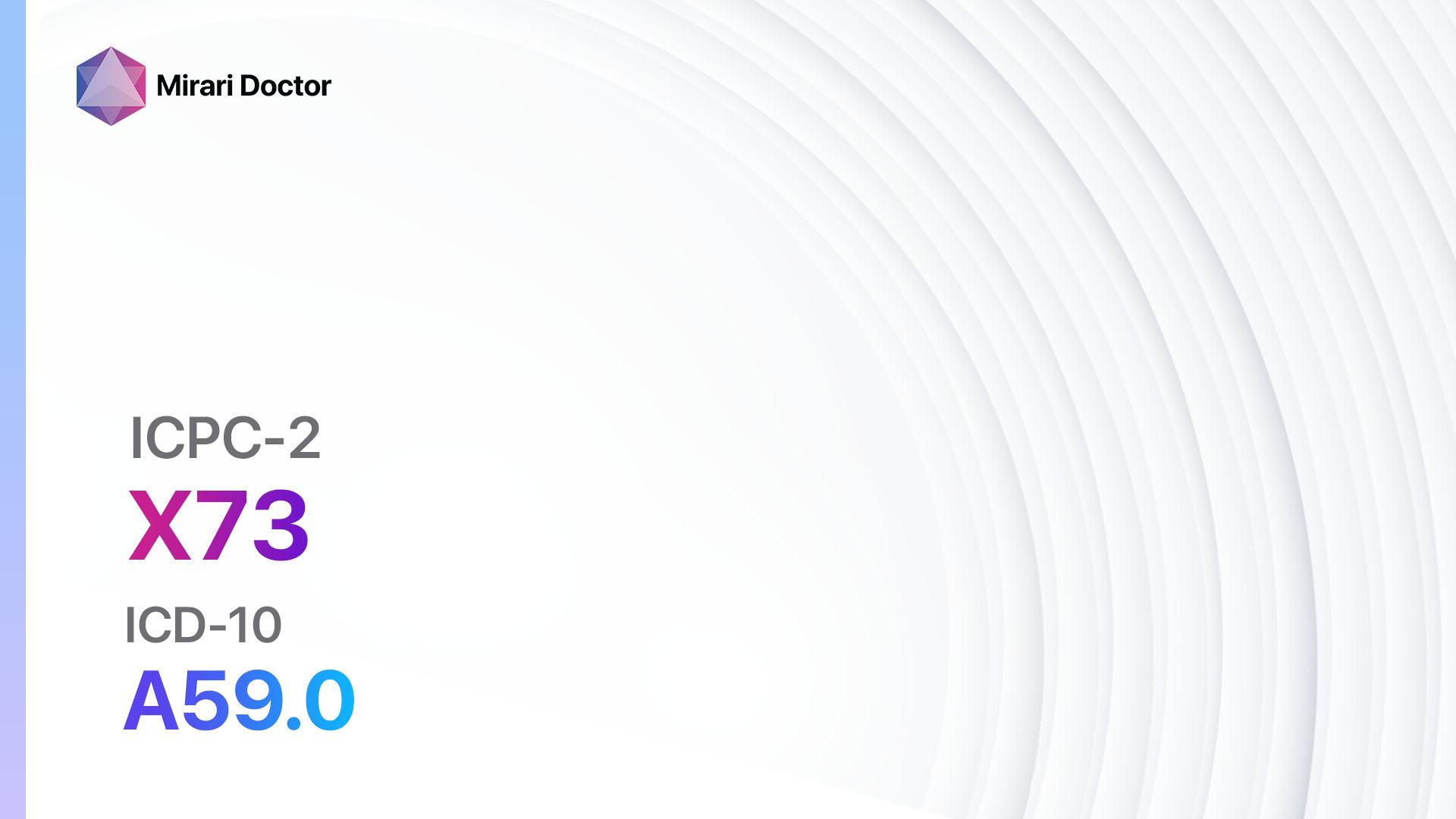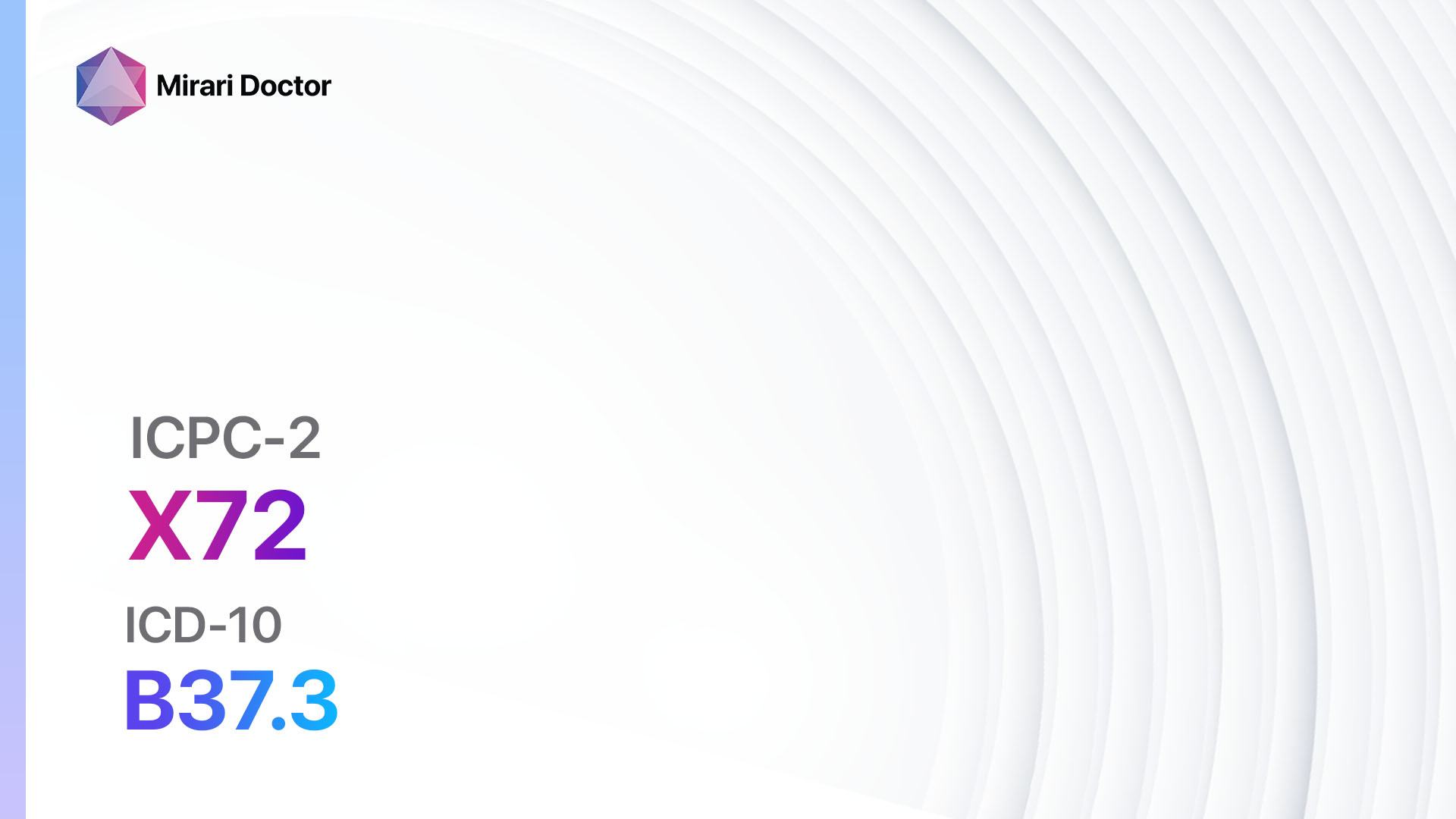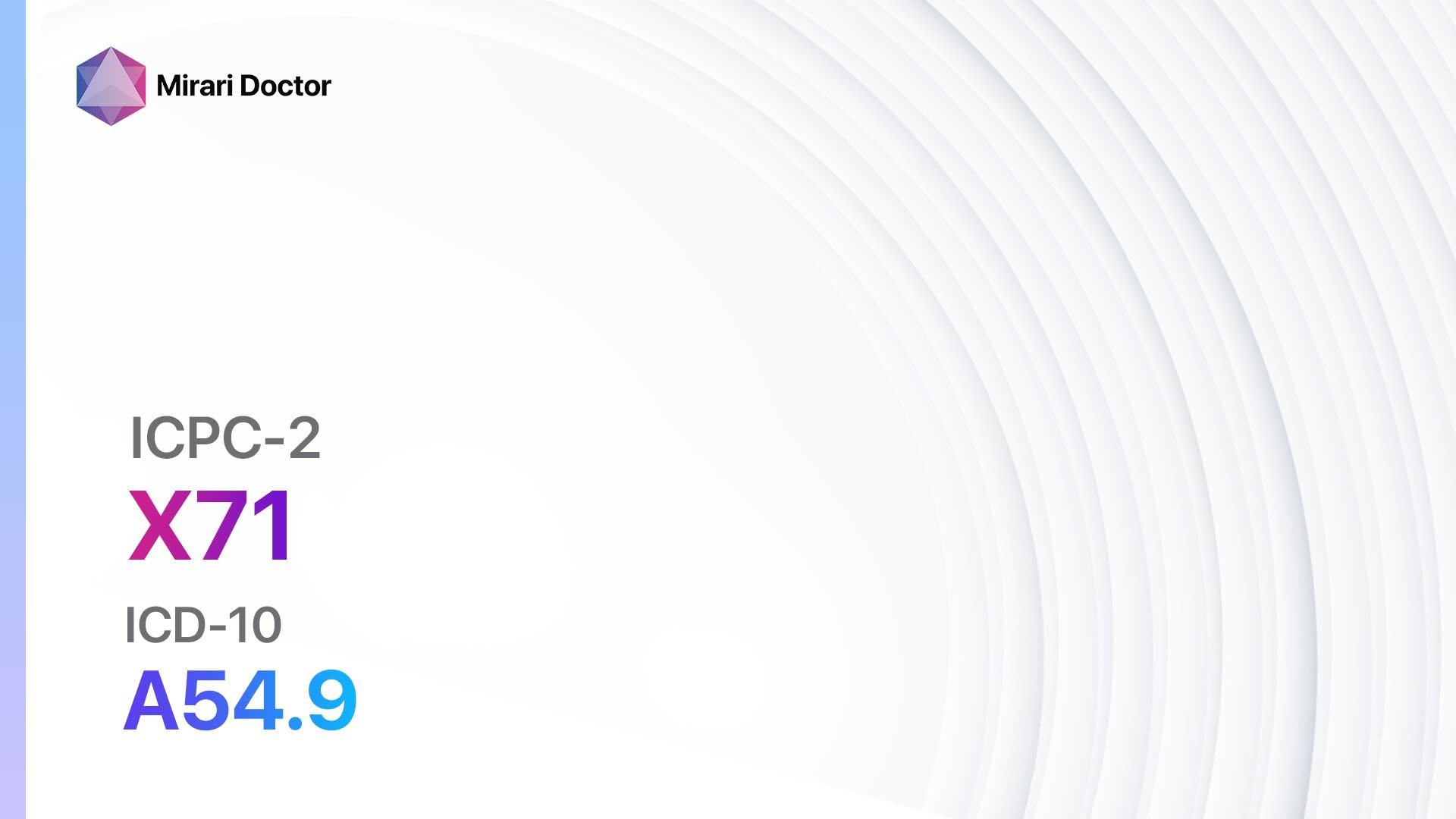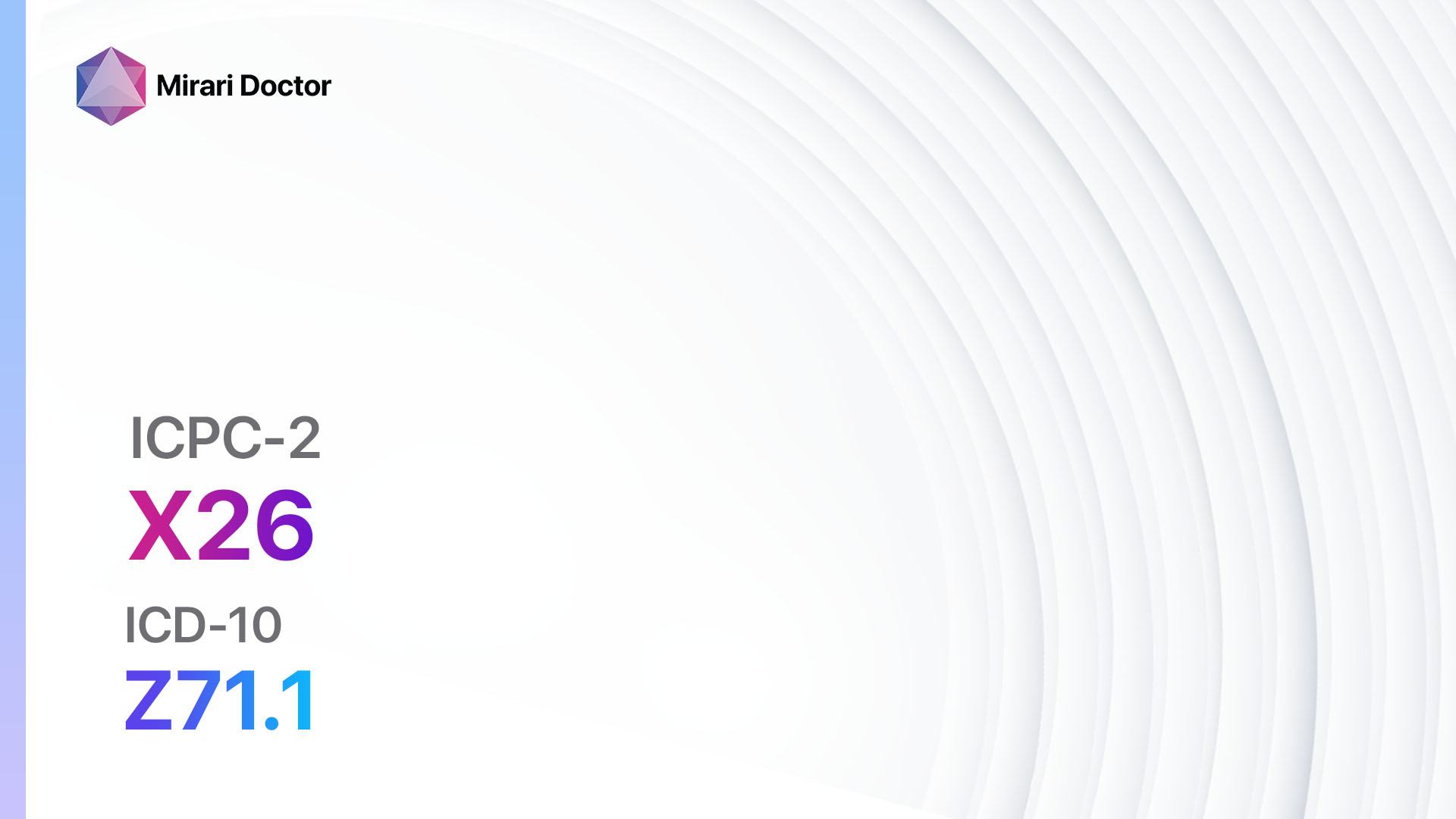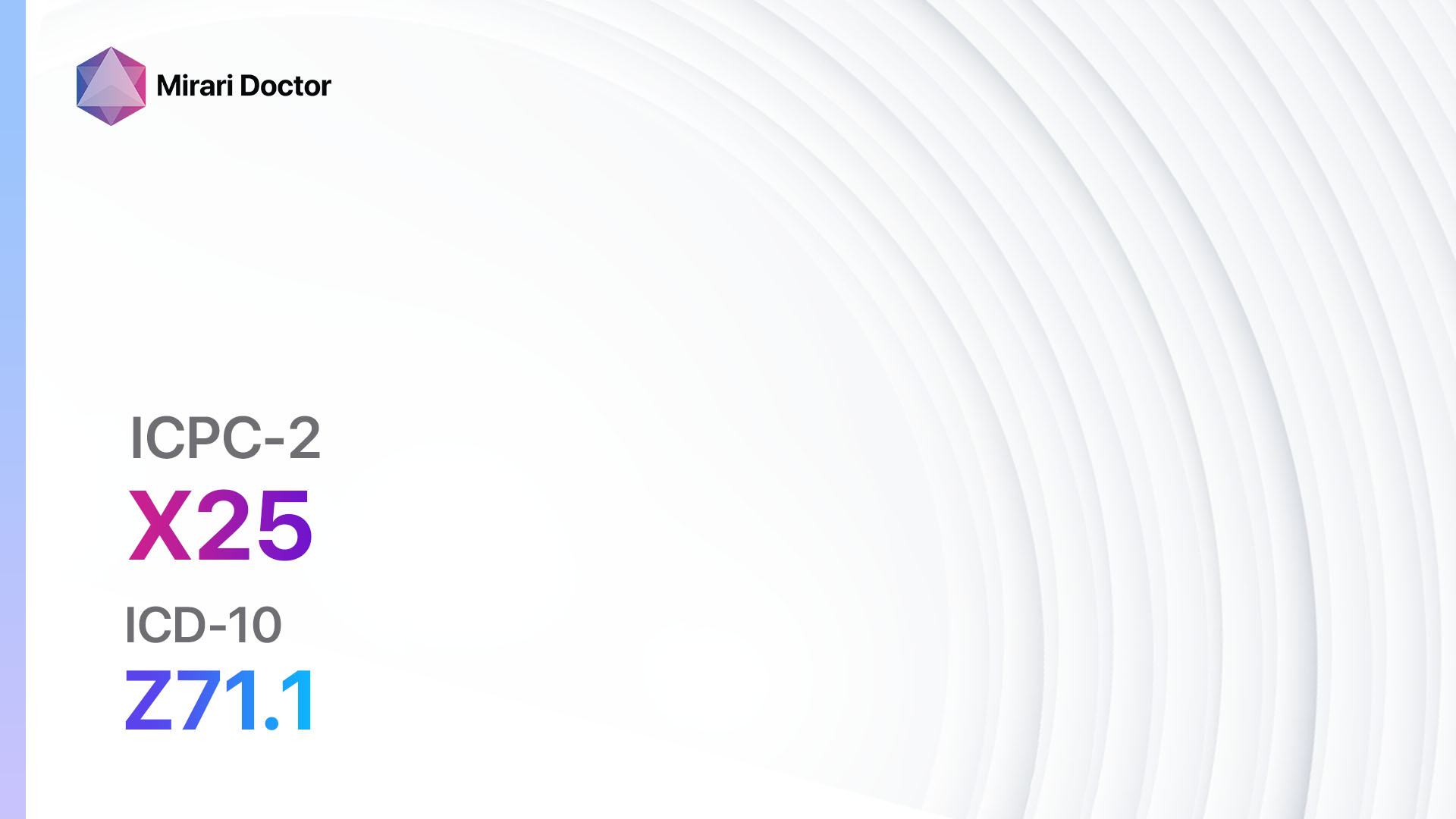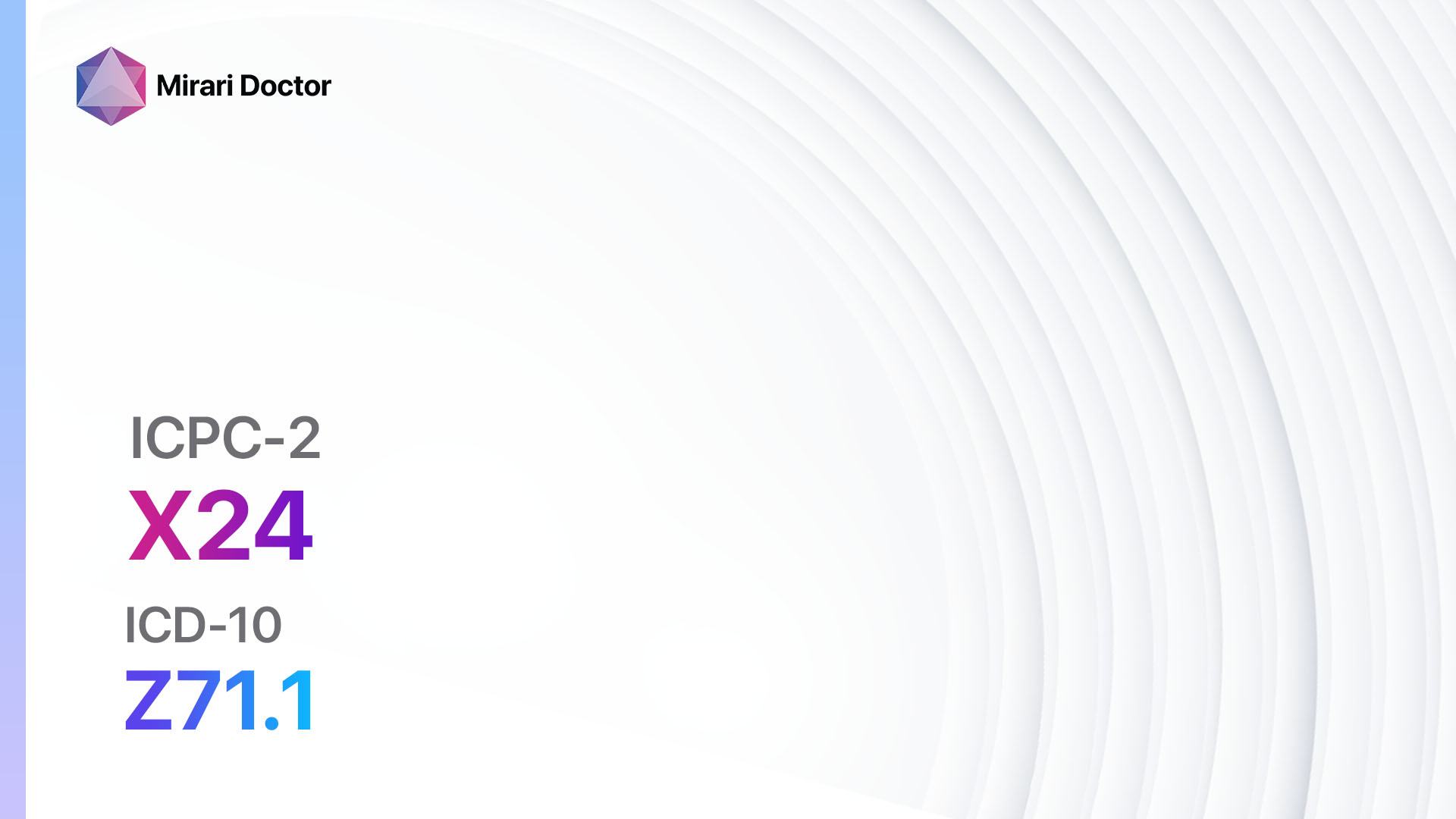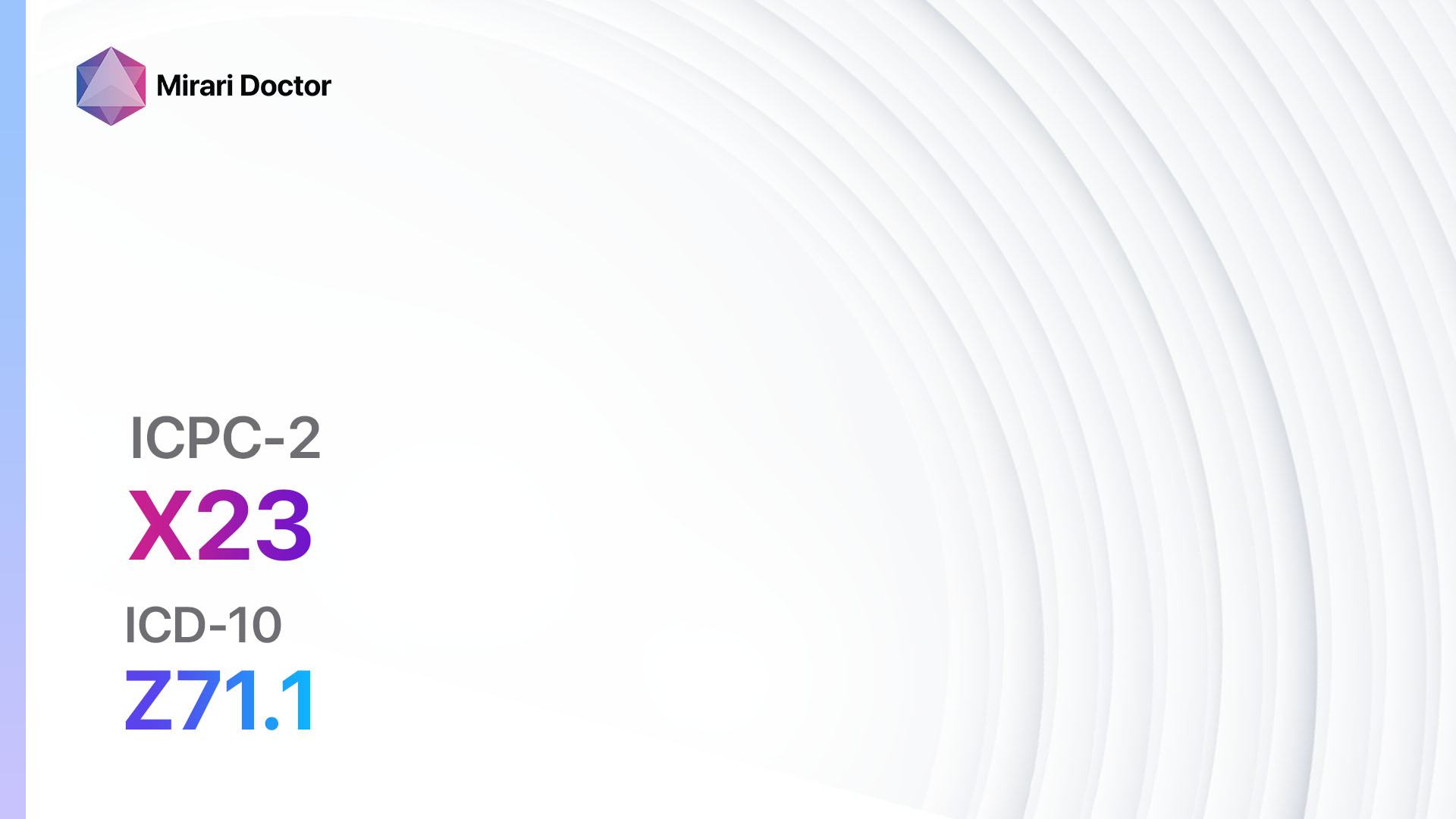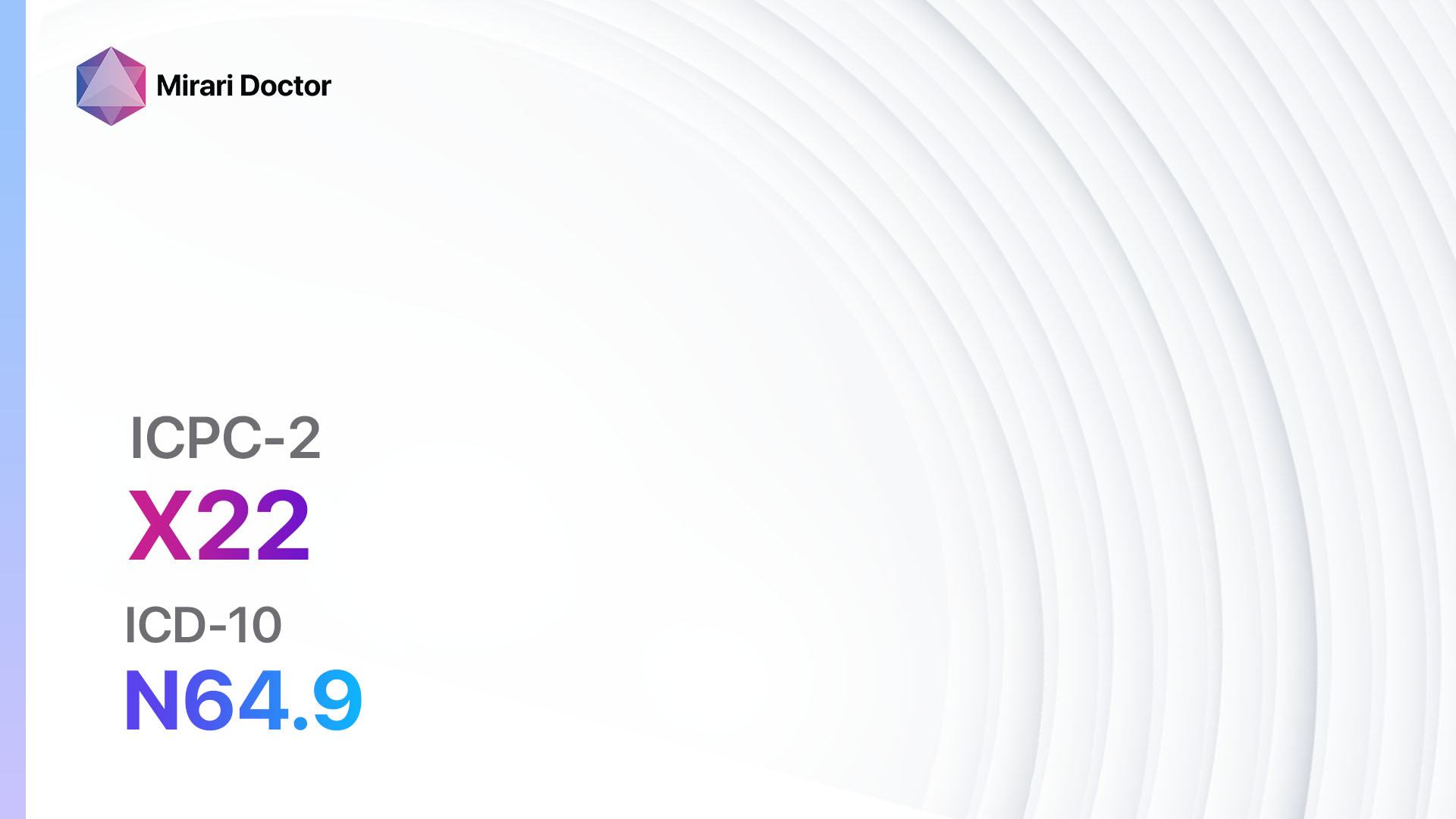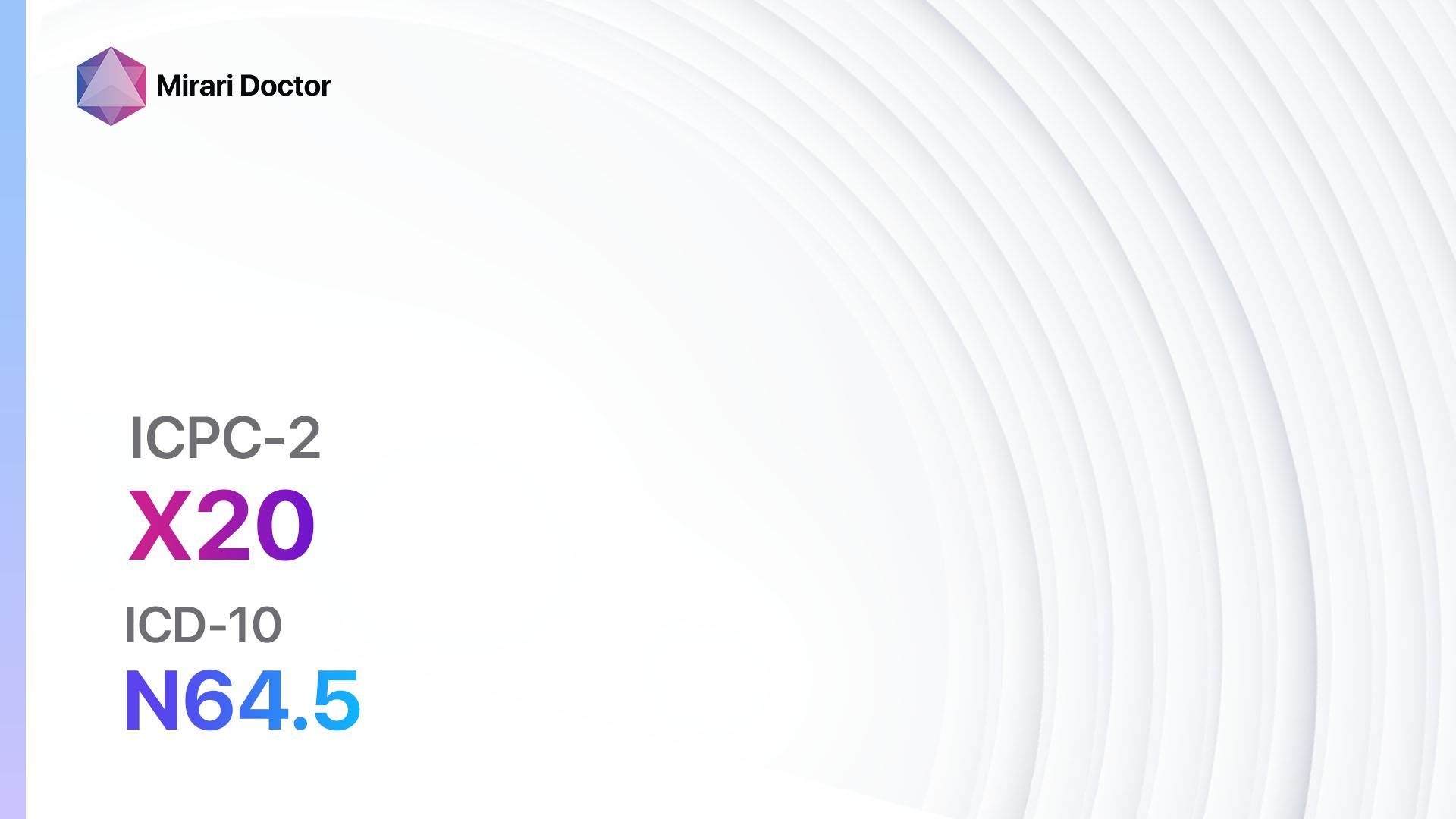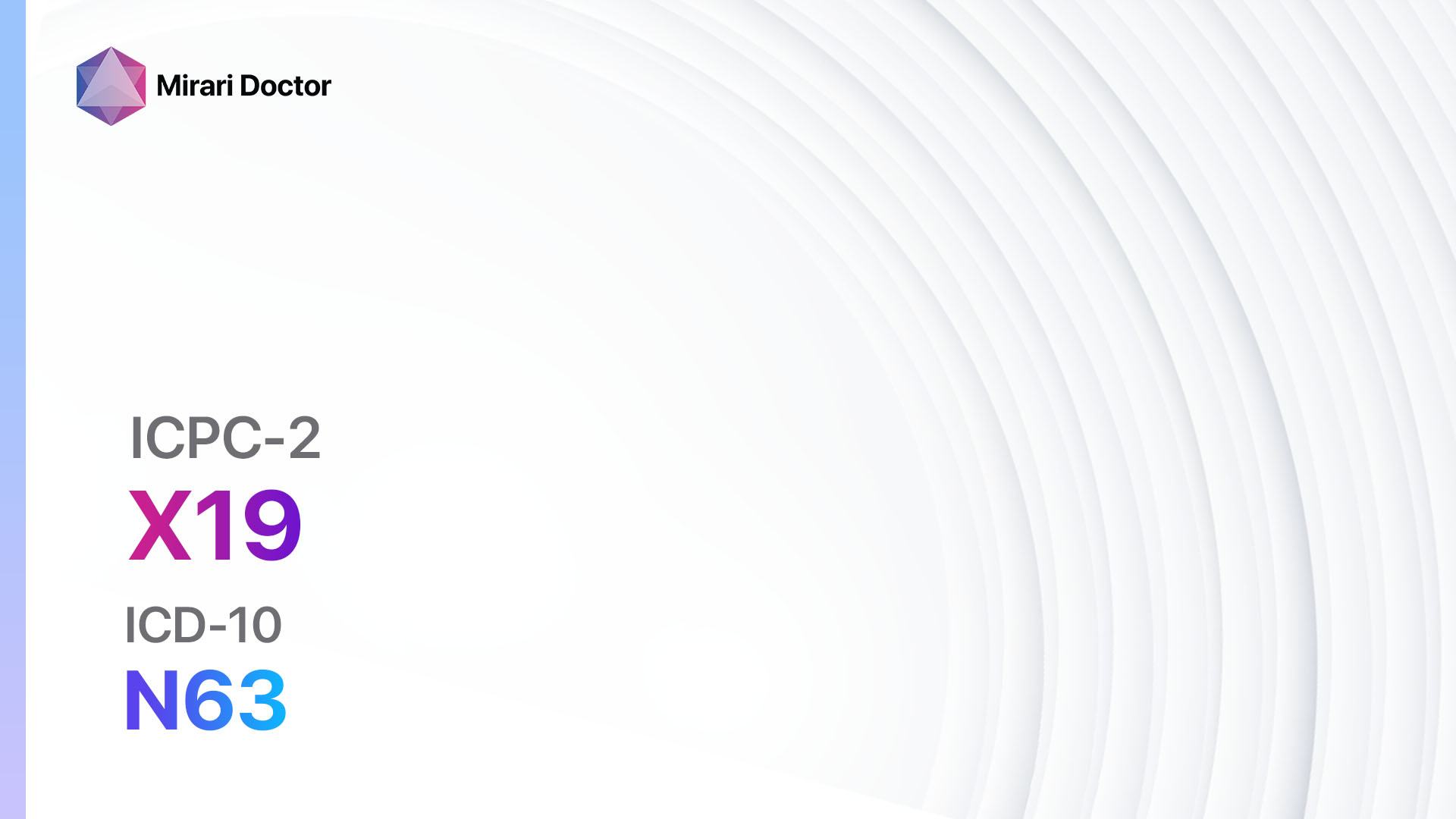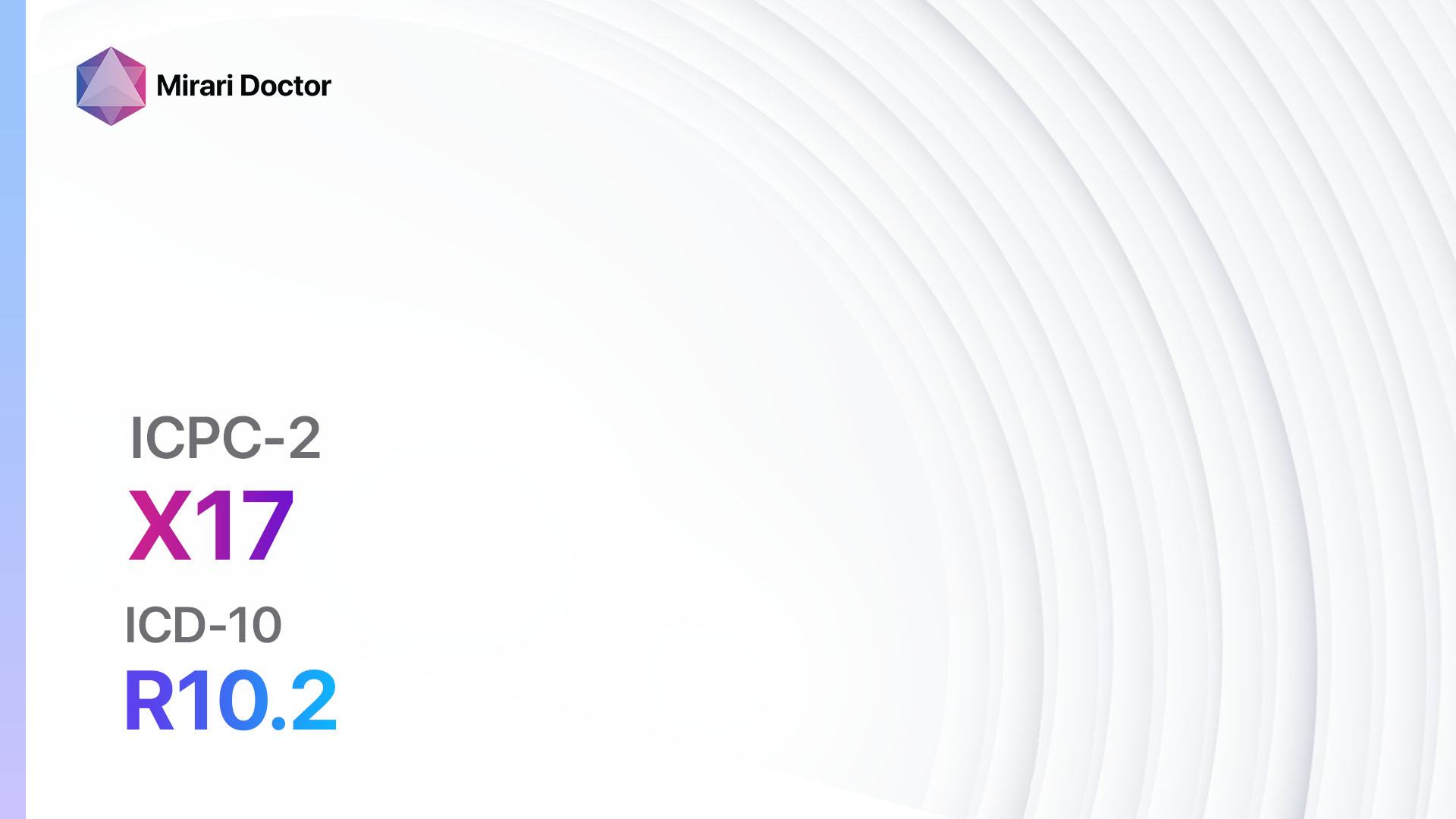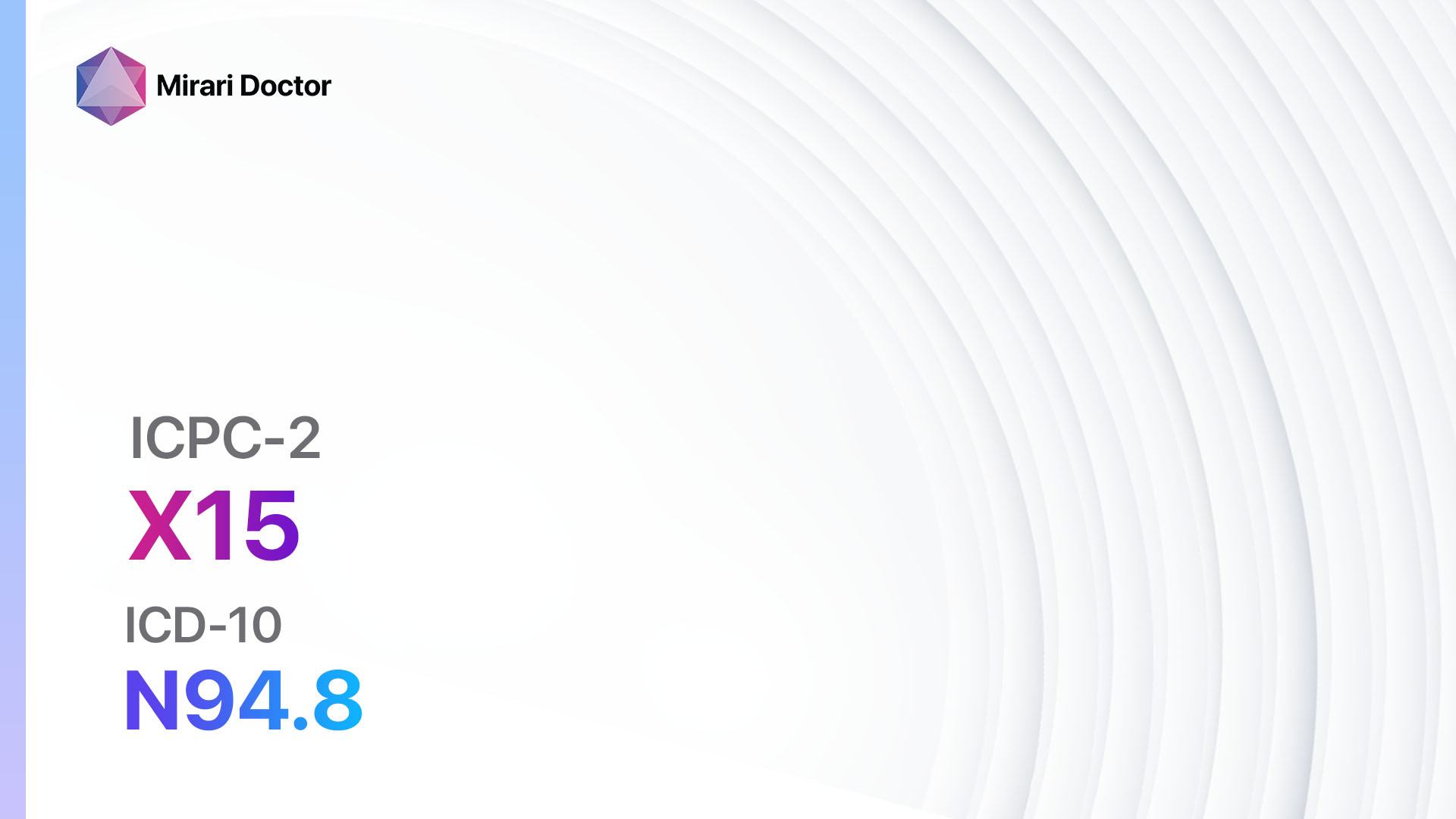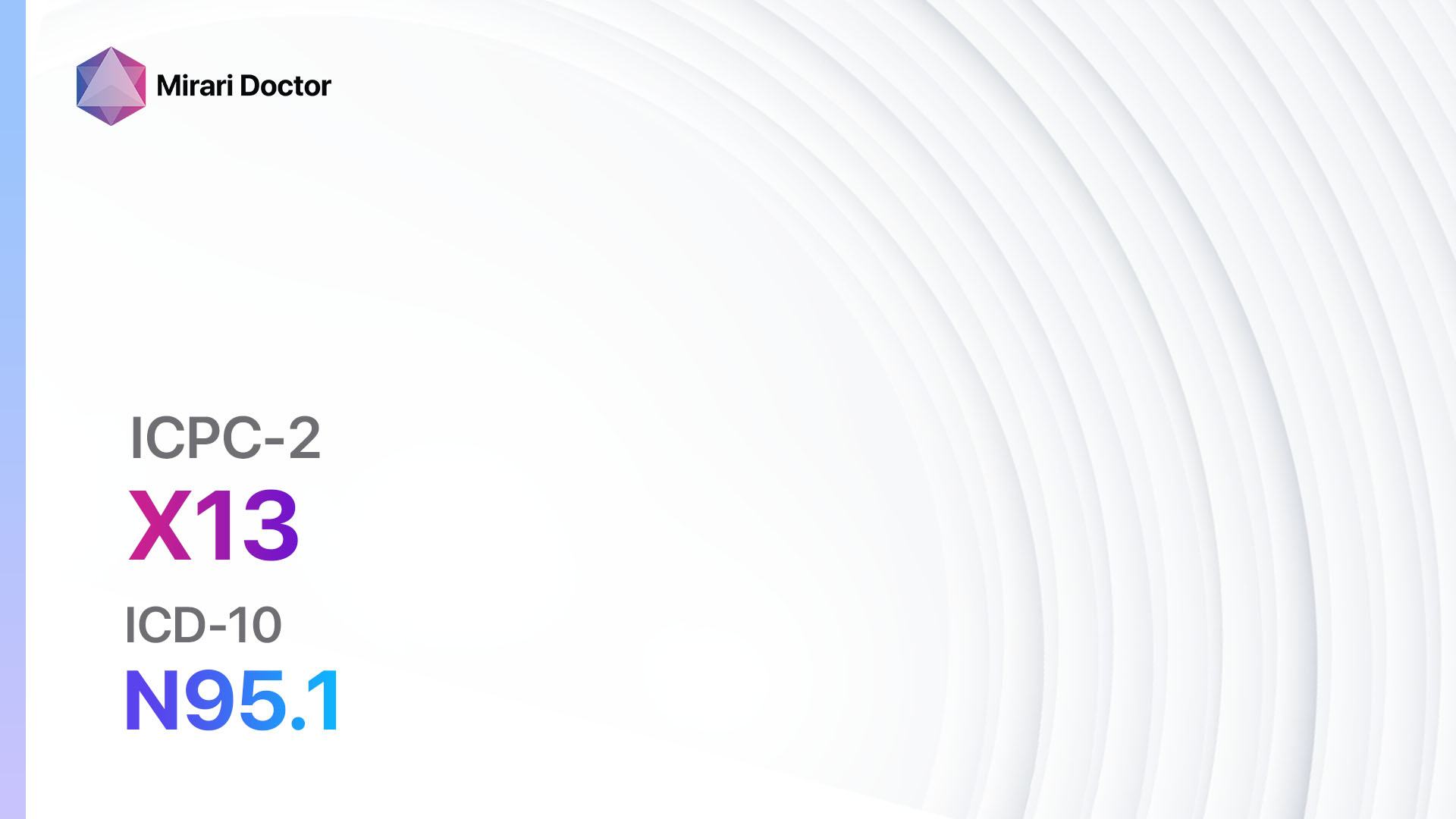
Introduction
Genital symptoms in females can be indicative of various underlying conditions. It is essential to identify the cause of these symptoms to provide appropriate treatment and management. This guide aims to outline the diagnostic steps, possible interventions, and lifestyle modifications for females presenting with genital symptoms.
Codes
- ICPC-2 Code: X29 Genital symptom/complaint female other[1]
- ICD-10 Code: N94.8 Other specified conditions associated with female genital organs and menstrual cycle[2]
Symptoms
- Vaginal itching: Itching or irritation in the vaginal area.[3]
- Abnormal vaginal discharge: Changes in color, consistency, or odor of vaginal discharge.[4]
- Genital pain: Pain or discomfort in the genital area.[5]
- Genital sores or ulcers: Open sores or ulcers in the genital region.[6]
- Genital swelling: Swelling or inflammation of the genital area.[7]
- Genital rash: Redness, bumps, or blisters on the genital skin.[8]
- Painful intercourse: Pain or discomfort during sexual intercourse.[9]
- Urinary symptoms: Urinary urgency, frequency, or pain during urination.[10]
Causes
- Infections: Bacterial vaginosis, yeast infections, sexually transmitted infections (STIs) such as chlamydia, gonorrhea, or herpes.
- Hormonal changes: Menopause, pregnancy, or hormonal imbalances.
- Allergic reactions: Allergies to certain products such as soaps, detergents, or latex.
- Skin conditions: Eczema, psoriasis, or lichen sclerosus.
- Trauma or injury: Irritation or injury to the genital area.
- Cancer: Vulvar or cervical cancer.
- Other medical conditions: Diabetes, autoimmune disorders, or urinary tract infections.
Diagnostic Steps
Medical History
- Gather information about the patient’s symptoms, including the duration, severity, and any associated factors.
- Inquire about any recent sexual activity, use of contraceptives, or changes in hygiene practices.
- Assess the patient’s medical history, including any previous genital infections, allergies, or chronic conditions.
- Determine if the patient is pregnant or experiencing menopause.
Physical Examination
- Perform a thorough physical examination of the genital area, including the vulva, vagina, and cervix.
- Look for any visible signs of infection, inflammation, sores, or ulcers.
- Palpate the pelvic area to check for tenderness or swelling.
- Collect samples of vaginal discharge for laboratory testing if necessary.
Laboratory Tests
- Vaginal swab: Collect a sample of vaginal discharge to test for bacterial vaginosis, yeast infections, or STIs.
- Urine analysis: Assess for urinary tract infections or other abnormalities.
- Blood tests: Check for hormonal imbalances, diabetes, or other underlying medical conditions.
- Pap smear: Screen for cervical cancer or abnormalities in cervical cells.
Diagnostic Imaging
- Transvaginal ultrasound: Visualize the reproductive organs to identify any structural abnormalities or cysts.
- Magnetic resonance imaging (MRI): Provide detailed images of the pelvic area to evaluate for tumors or other conditions.
- Colposcopy: Use a specialized instrument to examine the cervix for abnormalities.
Other Tests
- Biopsy: Take a small tissue sample from the genital area for further analysis if cancer or other serious conditions are suspected.
- Cultures: Collect samples from any sores or ulcers to identify the causative organism.
- Allergy testing: Determine if the patient has any allergies to specific substances or products.
Follow-up and Patient Education
- Schedule a follow-up appointment to discuss the results of the diagnostic tests and determine the appropriate treatment plan.
- Provide education on proper genital hygiene, safe sexual practices, and the importance of regular screenings for cervical cancer.
- Address any concerns or questions the patient may have regarding their condition or treatment options.
Possible Interventions
Traditional Interventions
Medications:
Top 5 drugs for Genital symptom/complt female oth.:
- Antifungal creams (e.g., Clotrimazole, Miconazole):
- Cost: Over-the-counter options range from $5-$15. Prescription-strength creams may cost $20-$50.
- Contraindications: Hypersensitivity to the medication.
- Side effects: Localized irritation or burning sensation.
- Severe side effects: Rare, but may include severe allergic reactions.
- Drug interactions: Minimal interactions reported.
- Warning: Follow the prescribed treatment duration and avoid sexual activity during treatment.
- Antibiotics (e.g., Metronidazole, Azithromycin):
- Cost: Generic versions can be $5-$20 for a course of treatment.
- Contraindications: Hypersensitivity to the medication.
- Side effects: Nausea, diarrhea, or abdominal discomfort.
- Severe side effects: Rare, but may include severe allergic reactions or liver toxicity.
- Drug interactions: Consult with a healthcare professional regarding potential interactions.
- Warning: Complete the full course of antibiotics as prescribed.
- Topical corticosteroids (e.g., Hydrocortisone):
- Cost: Over-the-counter options range from $5-$15. Prescription-strength creams may cost $20-$50.
- Contraindications: Hypersensitivity to the medication.
- Side effects: Localized skin thinning or discoloration with prolonged use.
- Severe side effects: Rare, but may include severe allergic reactions.
- Drug interactions: Minimal interactions reported.
- Warning: Limit the use of corticosteroids to the prescribed duration and area of application.
- Antiviral medications (e.g., Acyclovir, Valacyclovir):
- Cost: Generic versions can be $10-$30 for a course of treatment.
- Contraindications: Hypersensitivity to the medication.
- Side effects: Nausea, headache, or dizziness.
- Severe side effects: Rare, but may include severe allergic reactions or kidney problems.
- Drug interactions: Consult with a healthcare professional regarding potential interactions.
- Warning: Start antiviral treatment as soon as possible during an outbreak.
- Hormonal therapy (e.g., Estrogen creams, Hormonal contraceptives):
- Cost: Estrogen creams can range from $20-$100. Hormonal contraceptives vary in cost depending on the specific product and insurance coverage.
- Contraindications: History of estrogen-sensitive cancers, blood clots, or liver disease.
- Side effects: Vaginal irritation, breast tenderness, or irregular bleeding.
- Severe side effects: Rare, but may include blood clots or increased risk of certain cancers.
- Drug interactions: Consult with a healthcare professional regarding potential interactions.
- Warning: Discuss the risks and benefits of hormonal therapy with a healthcare professional.
Alternative Drugs:
- Probiotics: May help restore the natural balance of vaginal flora.
- Antihistamines: Can provide relief from itching or allergic reactions.
- Immunomodulators: Used in specific cases of chronic or recurrent infections.
- Pain medications: Over-the-counter pain relievers may help alleviate discomfort.
Surgical Procedures:
- Surgical interventions are not typically indicated for genital symptoms/complaints in females. However, in cases of severe or persistent conditions, surgical options may be considered. Consult with a healthcare professional for further evaluation and recommendations.
Alternative Interventions
- Herbal remedies: Some herbs, such as tea tree oil or aloe vera, may provide relief from itching or inflammation. Cost: Varies depending on the specific product or preparation.
- Sitz baths: Soaking the genital area in warm water with added salts or herbal extracts can help alleviate symptoms. Cost: Minimal cost for salts or herbal extracts.
- Yogurt: Applying plain, unsweetened yogurt to the genital area may help restore the natural balance of vaginal flora. Cost: Minimal cost for yogurt.
- Stress reduction techniques: Stress management, relaxation exercises, or mindfulness practices may help reduce symptoms associated with certain conditions. Cost: Varies depending on the chosen technique or program.
- Alternative therapies: Acupuncture, homeopathy, or naturopathy may be explored as adjunctive treatments. Cost: Varies depending on the practitioner and location.
Lifestyle Interventions
- Hygiene practices: Avoid using harsh soaps, douches, or scented products in the genital area. Opt for gentle, fragrance-free cleansers.
- Cotton underwear: Wear breathable cotton underwear to promote airflow and reduce moisture in the genital area.
- Avoid irritants: Identify and avoid any potential irritants, such as certain fabrics, laundry detergents, or personal care products.
- Safe sexual practices: Use barrier methods of contraception, such as condoms, to reduce the risk of STIs.
- Healthy diet: Maintain a balanced diet rich in fruits, vegetables, and whole grains to support overall health and immune function.
- Stay hydrated: Drink an adequate amount of water to promote hydration and vaginal health.
- Regular exercise: Engage in regular physical activity to improve circulation and overall well-being.
It is important to note that the cost ranges provided are approximate and may vary depending on the location and availability of the interventions. Consult with a healthcare professional for specific cost information and recommendations tailored to individual needs.
Conclusion
Genital symptoms in females can be caused by various factors, including infections, hormonal changes, allergies, or underlying medical conditions. A comprehensive diagnostic approach, including medical history, physical examination, and laboratory tests, is essential to identify the underlying cause. Treatment options may include medications, surgical interventions (in rare cases), alternative therapies, and lifestyle modifications. It is important to consult with a healthcare professional for accurate diagnosis and personalized treatment recommendations.
Mirari Cold Plasma Alternative Intervention
Understanding Mirari Cold Plasma
- Safe and Non-Invasive Treatment: Mirari Cold Plasma is a safe and non-invasive treatment option for various skin conditions. It does not require incisions, minimizing the risk of scarring, bleeding, or tissue damage.
- Efficient Extraction of Foreign Bodies: Mirari Cold Plasma facilitates the removal of foreign bodies from the skin by degrading and dissociating organic matter, allowing easier access and extraction.
- Pain Reduction and Comfort: Mirari Cold Plasma has a local analgesic effect, providing pain relief during the treatment, making it more comfortable for the patient.
- Reduced Risk of Infection: Mirari Cold Plasma has antimicrobial properties, effectively killing bacteria and reducing the risk of infection.
- Accelerated Healing and Minimal Scarring: Mirari Cold Plasma stimulates wound healing and tissue regeneration, reducing healing time and minimizing the formation of scars.
Mirari Cold Plasma Prescription
Video instructions for using Mirari Cold Plasma Device – X29 Genital symptom/complaint female other (ICD-10:N94.8)
| Mild | Moderate | Severe |
| Mode setting: 1 (Infection) Location: 0 (Localized) Morning: 15 minutes, Evening: 15 minutes |
Mode setting: 1 (Infection) Location: 0 (Localized) Morning: 30 minutes, Lunch: 30 minutes, Evening: 30 minutes |
Mode setting: 1 (Infection) Location: 0 (Localized) Morning: 30 minutes, Lunch: 30 minutes, Evening: 30 minutes |
| Mode setting: 3 (Antiviral Therapy) Location: 0 (Localized) Morning: 15 minutes, Evening: 15 minutes |
Mode setting: 3 (Antiviral Therapy) Location: 0 (Localized) Morning: 30 minutes, Lunch: 30 minutes, Evening: 30 minutes |
Mode setting: 3 (Antiviral Therapy) Location: 0 (Localized) Morning: 30 minutes, Lunch: 30 minutes, Evening: 30 minutes |
| Mode setting: 3 (Antiviral Therapy) Location: 0 (Localized) Morning: 15 minutes, Evening: 15 minutes |
Mode setting: 3 (Antiviral Therapy) Location: 0 (Localized) Morning: 30 minutes, Lunch: 30 minutes, Evening: 30 minutes |
Mode setting: 3 (Antiviral Therapy) Location: 0 (Localized) Morning: 30 minutes, Lunch: 30 minutes, Evening: 30 minutes |
| Mode setting: 7 (Immunotherapy) Location: 1 (Sacrum) Morning: 15 minutes, Evening: 15 minutes |
Mode setting: 7 (Immunotherapy) Location: 1 (Sacrum) Morning: 30 minutes, Lunch: 30 minutes, Evening: 30 minutes |
Mode setting: 7 (Immunotherapy) Location: 1 (Sacrum) Morning: 30 minutes, Lunch: 30 minutes, Evening: 30 minutes |
| Total Morning: 60 minutes approx. $10 USD, Evening: 60 minutes approx. $10 USD |
Total Morning: 120 minutes approx. $20 USD, Lunch: 120 minutes approx. $20 USD, Evening: 120 minutes approx. $20 USD, |
Total Morning: 120 minutes approx. $20 USD, Lunch: 120 minutes approx. $20 USD, Evening: 120 minutes approx. $20 USD, |
| Usual treatment for 7-60 days approx. $140 USD – $1200 USD | Usual treatment for 6-8 weeks approx. $2,520 USD – $3,360 USD |
Usual treatment for 3-6 months approx. $5,400 USD – $10,800 USD
|
 |
|
Use the Mirari Cold Plasma device to treat Genital symptom/complt female oth. effectively.
WARNING: MIRARI COLD PLASMA IS DESIGNED FOR THE HUMAN BODY WITHOUT ANY ARTIFICIAL OR THIRD PARTY PRODUCTS. USE OF OTHER PRODUCTS IN COMBINATION WITH MIRARI COLD PLASMA MAY CAUSE UNPREDICTABLE EFFECTS, HARM OR INJURY. PLEASE CONSULT A MEDICAL PROFESSIONAL BEFORE COMBINING ANY OTHER PRODUCTS WITH USE OF MIRARI.
Step 1: Cleanse the Skin
- Start by cleaning the affected area of the skin with a gentle cleanser or mild soap and water. Gently pat the area dry with a clean towel.
Step 2: Prepare the Mirari Cold Plasma device
- Ensure that the Mirari Cold Plasma device is fully charged or has fresh batteries as per the manufacturer’s instructions. Make sure the device is clean and in good working condition.
- Switch on the Mirari device using the power button or by following the specific instructions provided with the device.
- Some Mirari devices may have adjustable settings for intensity or treatment duration. Follow the manufacturer’s instructions to select the appropriate settings based on your needs and the recommended guidelines.
Step 3: Apply the Device
- Place the Mirari device in direct contact with the affected area of the skin. Gently glide or hold the device over the skin surface, ensuring even coverage of the area experiencing.
- Slowly move the Mirari device in a circular motion or follow a specific pattern as indicated in the user manual. This helps ensure thorough treatment coverage.
Step 4: Monitor and Assess:
- Keep track of your progress and evaluate the effectiveness of the Mirari device in managing your Genital symptom/complt female oth.. If you have any concerns or notice any adverse reactions, consult with your health care professional.
Note
This guide is for informational purposes only and should not replace the advice of a medical professional. Always consult with your healthcare provider or a qualified medical professional for personal advice, diagnosis, or treatment. Do not solely rely on the information presented here for decisions about your health. Use of this information is at your own risk. The authors of this guide, nor any associated entities or platforms, are not responsible for any potential adverse effects or outcomes based on the content.
Mirari Cold Plasma System Disclaimer
- Purpose: The Mirari Cold Plasma System is a Class 2 medical device designed for use by trained healthcare professionals. It is registered for use in Thailand and Vietnam. It is not intended for use outside of these locations.
- Informational Use: The content and information provided with the device are for educational and informational purposes only. They are not a substitute for professional medical advice or care.
- Variable Outcomes: While the device is approved for specific uses, individual outcomes can differ. We do not assert or guarantee specific medical outcomes.
- Consultation: Prior to utilizing the device or making decisions based on its content, it is essential to consult with a Certified Mirari Tele-Therapist and your medical healthcare provider regarding specific protocols.
- Liability: By using this device, users are acknowledging and accepting all potential risks. Neither the manufacturer nor the distributor will be held accountable for any adverse reactions, injuries, or damages stemming from its use.
- Geographical Availability: This device has received approval for designated purposes by the Thai and Vietnam FDA. As of now, outside of Thailand and Vietnam, the Mirari Cold Plasma System is not available for purchase or use.
References
- World Health Organization. (2016). International Classification of Primary Care, Second edition (ICPC-2).
- World Health Organization. (2019). International Statistical Classification of Diseases and Related Health Problems (11th ed.).
- Sobel, J. D. (2007). Vulvovaginal candidosis. The Lancet, 369(9577), 1961-1971.
- Anderson, M. R., Klink, K., & Cohrssen, A. (2004). Evaluation of vaginal complaints. Jama, 291(11), 1368-1379.
- Bachmann, G. A., & Rosen, R. (2006). Vulvodynia: strategies for treatment. Clinical obstetrics and gynecology, 49(4), 769-785.
- Roett, M. A., Mayor, M. T., & Uduhiri, K. A. (2012). Diagnosis and management of genital ulcers. American family physician, 85(3), 254-262.
- Margesson, L. J. (2004). Vulvar disease pearls. Dermatologic clinics, 22(2), 145-155.
- Lynch, P. J. (2004). Lichen simplex chronicus (atopic/neurodermatitis) of the anogenital region. Dermatologic therapy, 17(1), 8-19.
- Heim, L. J. (2001). Evaluation and differential diagnosis of dyspareunia. American family physician, 63(8), 1535.
- Latthe, P., Latthe, M., Say, L., Gülmezoglu, M., & Khan, K. S. (2006). WHO systematic review of prevalence of chronic pelvic pain: a neglected reproductive health morbidity. BMC public health, 6(1), 1-7.
Related articles
Made in USA


